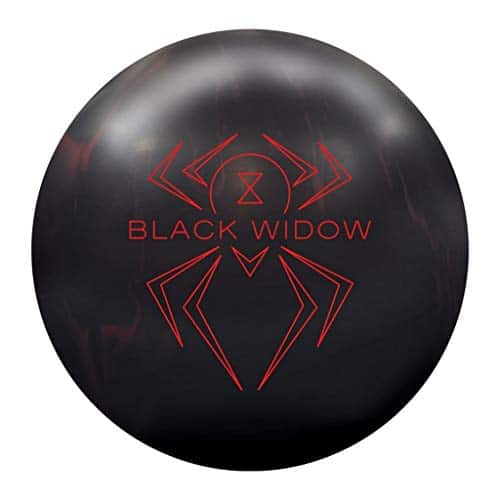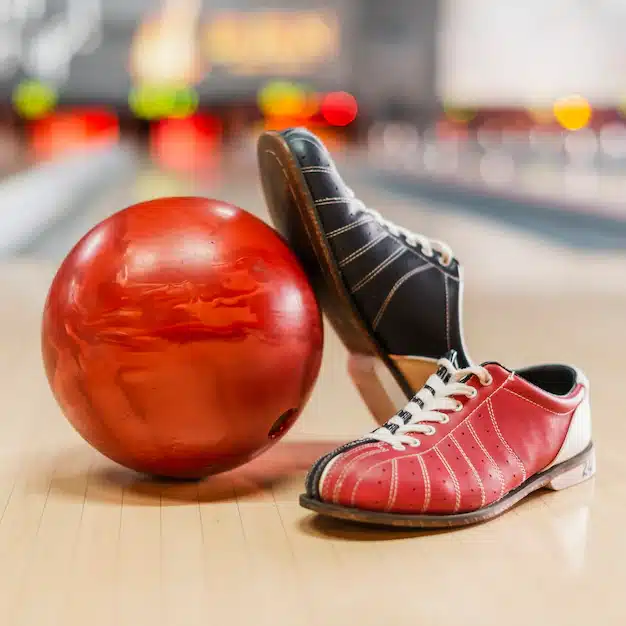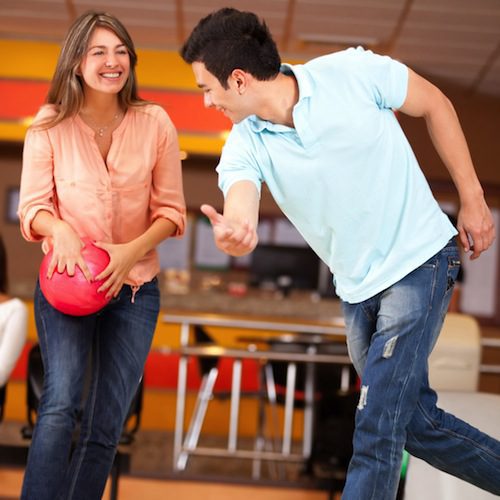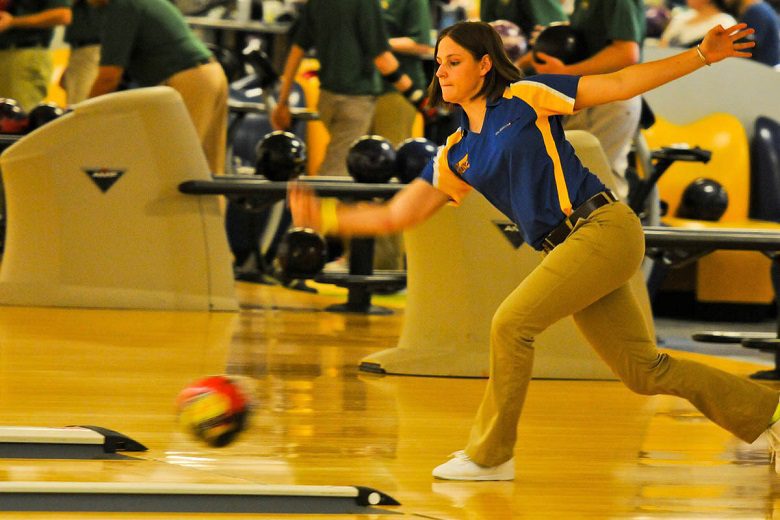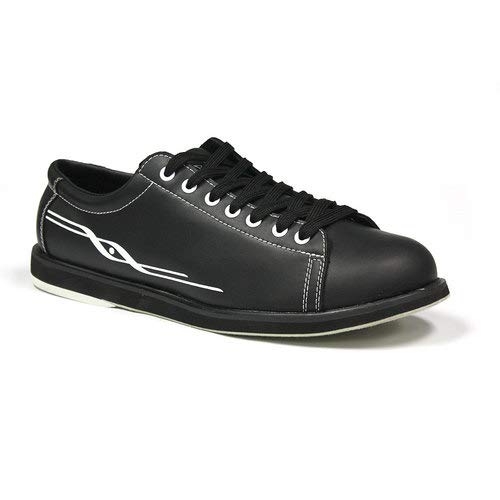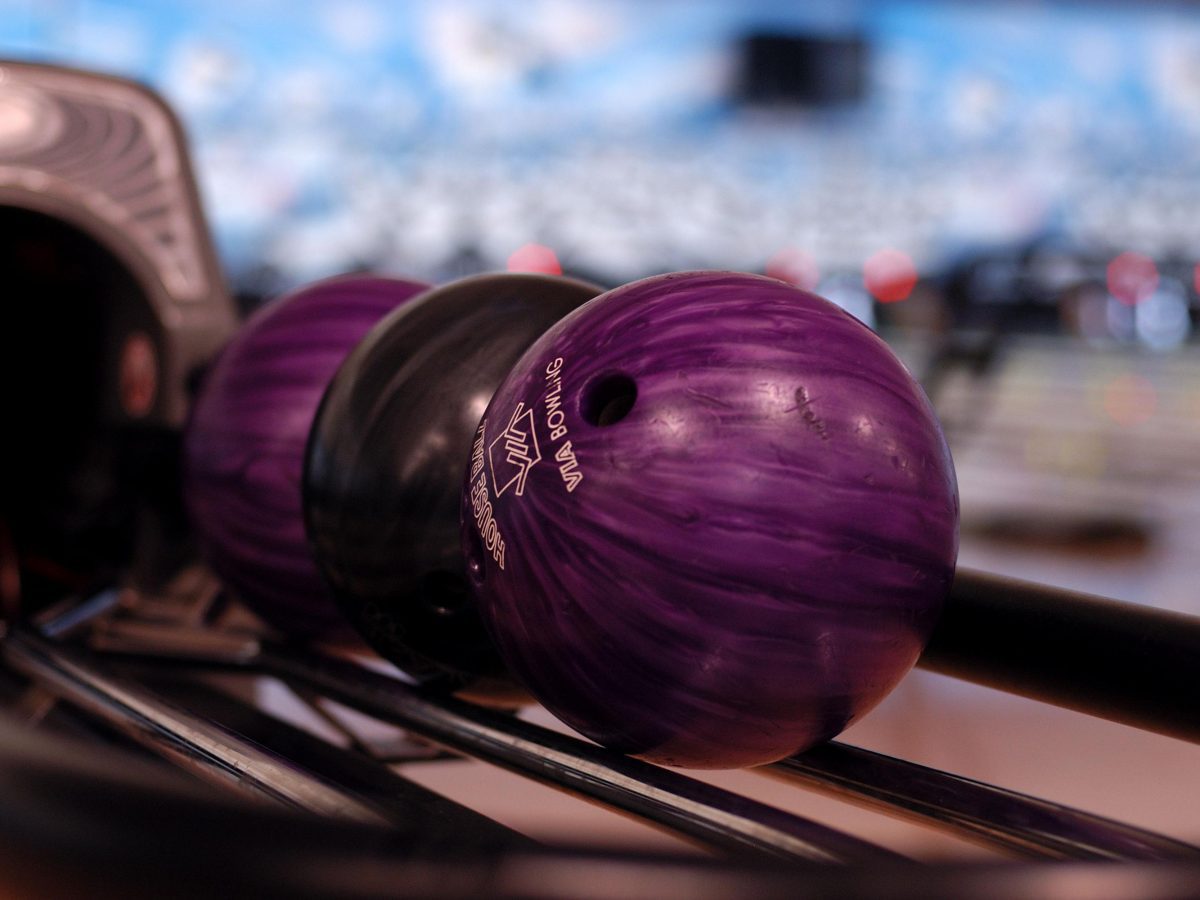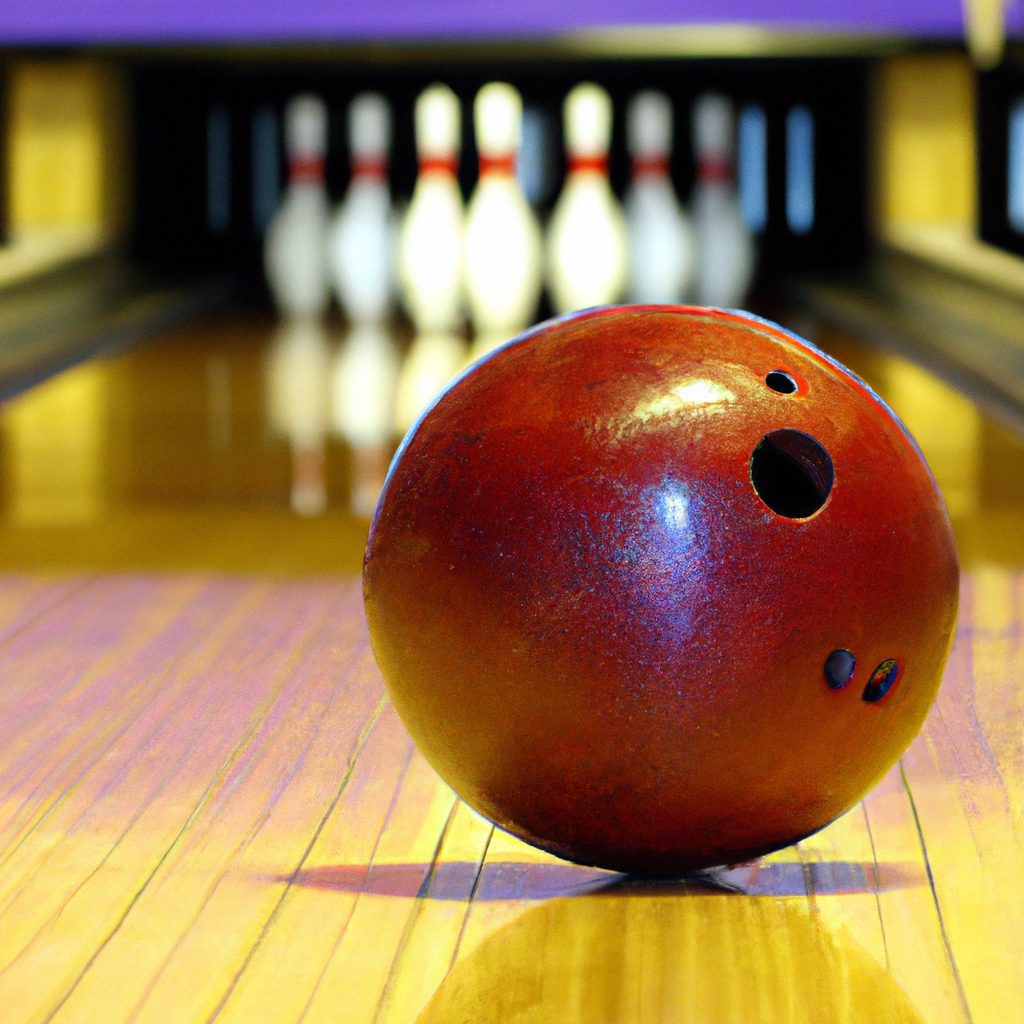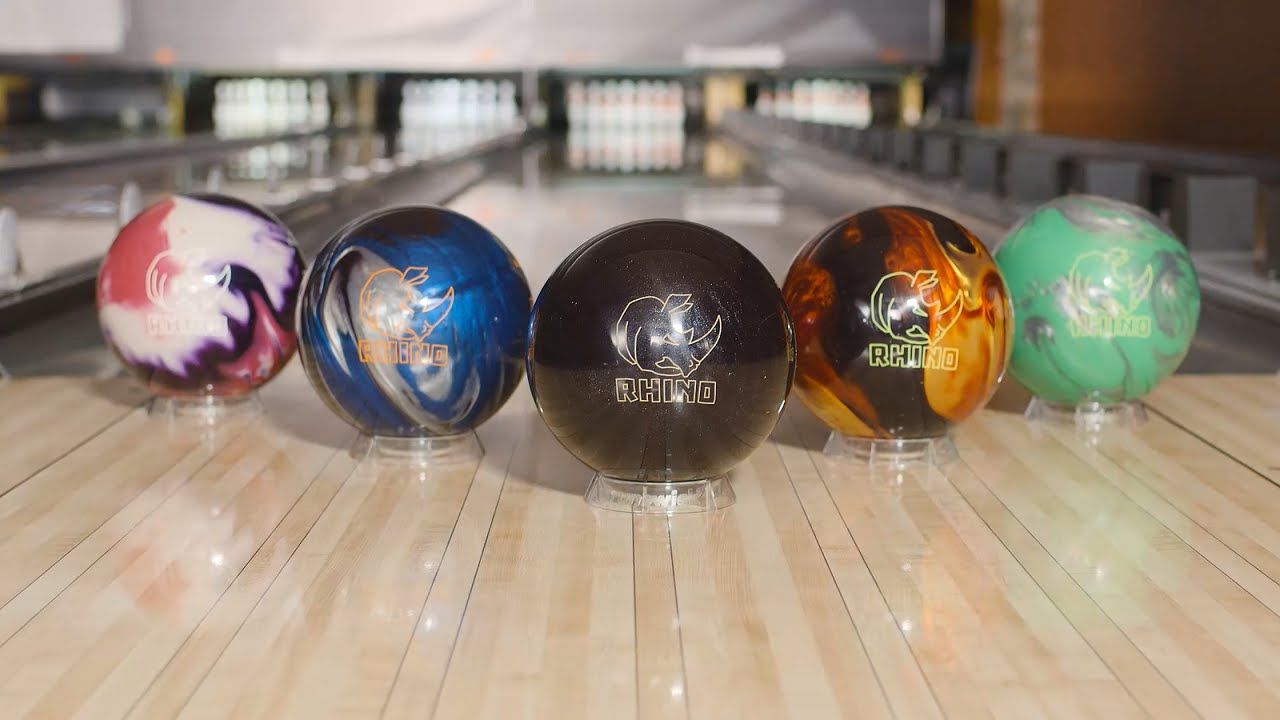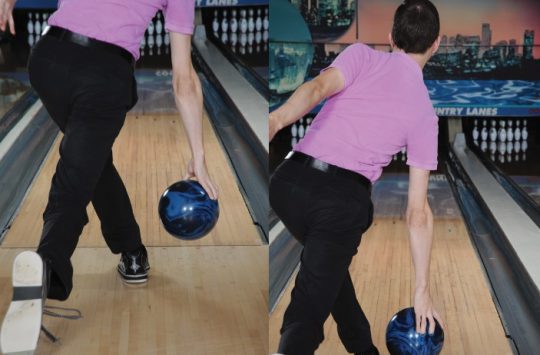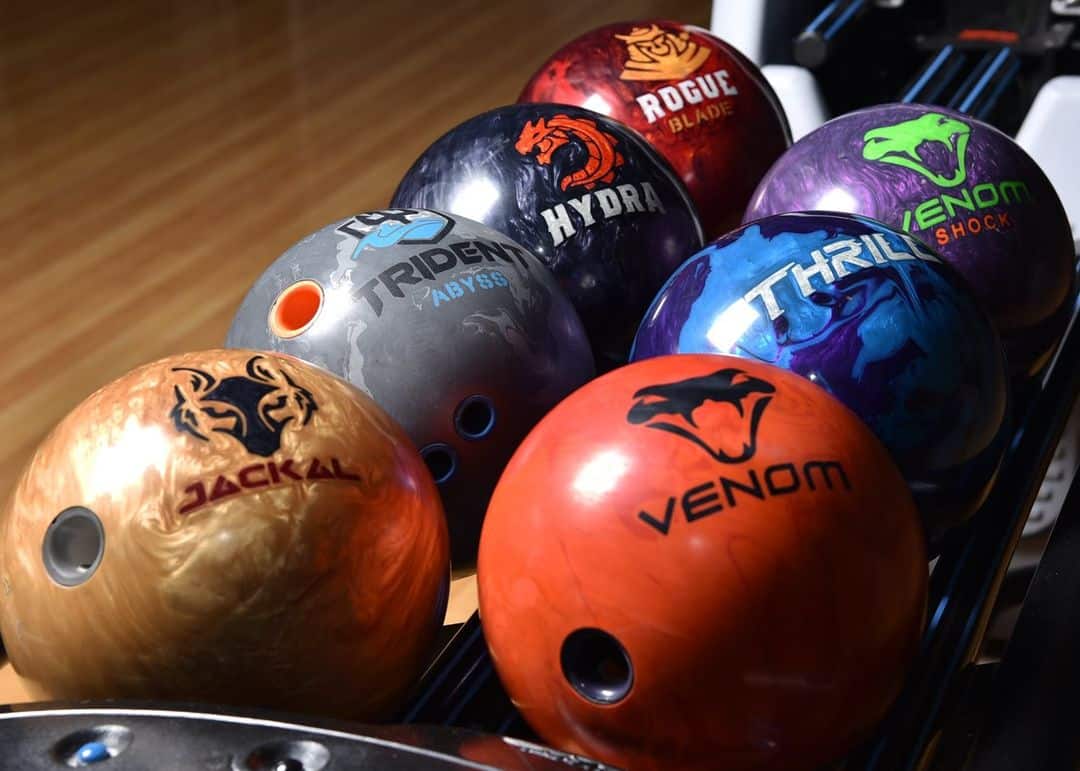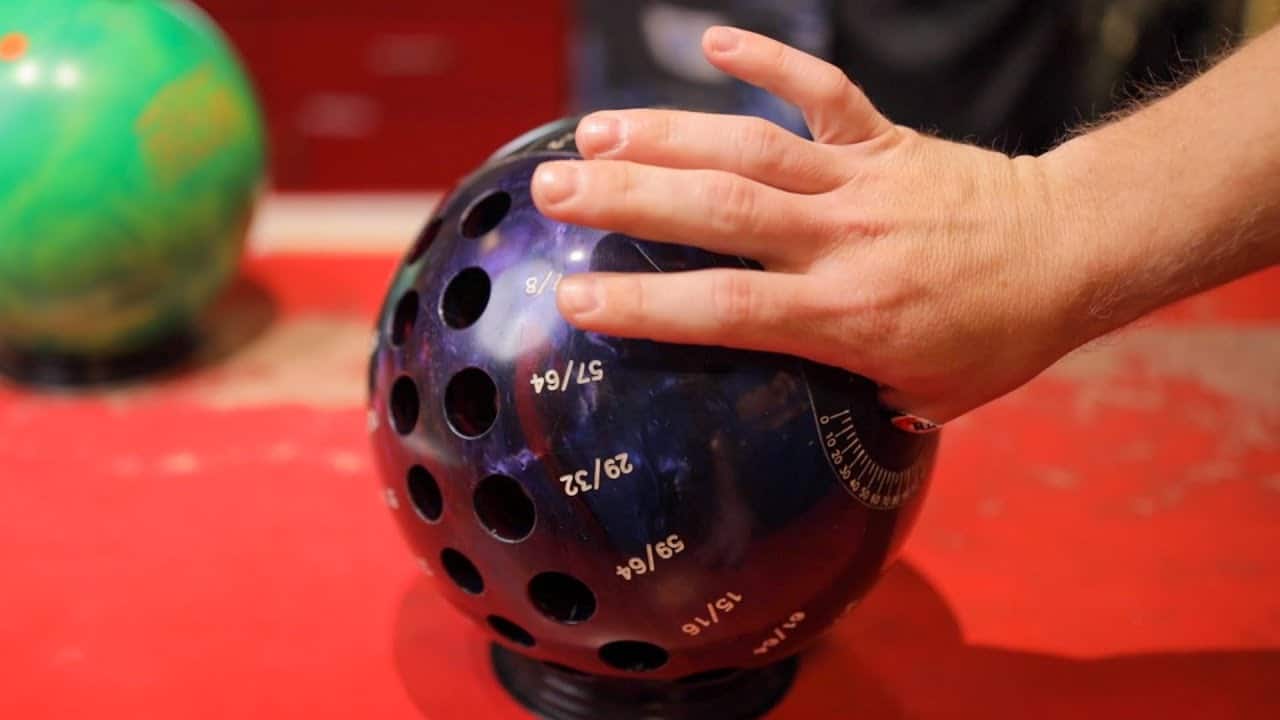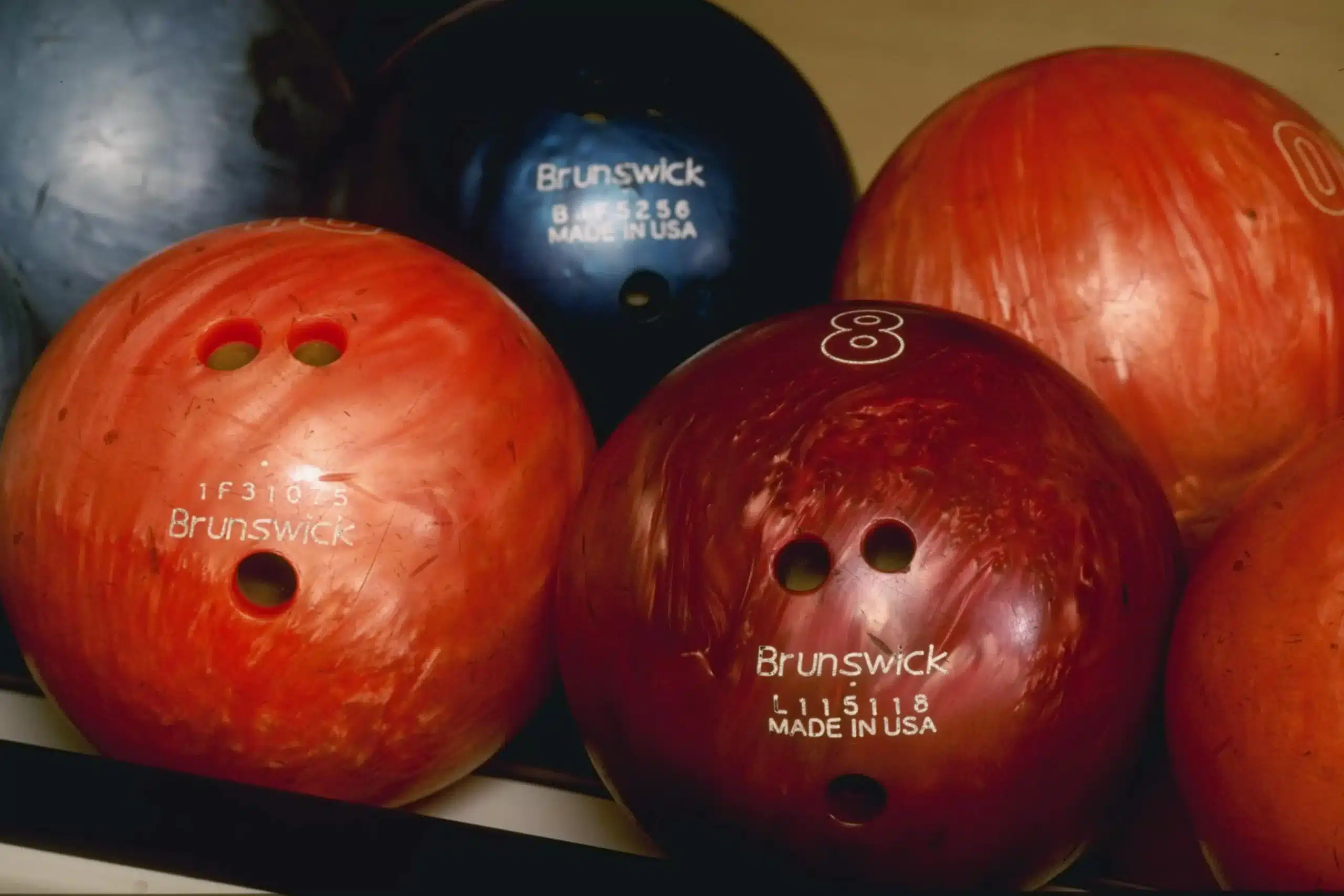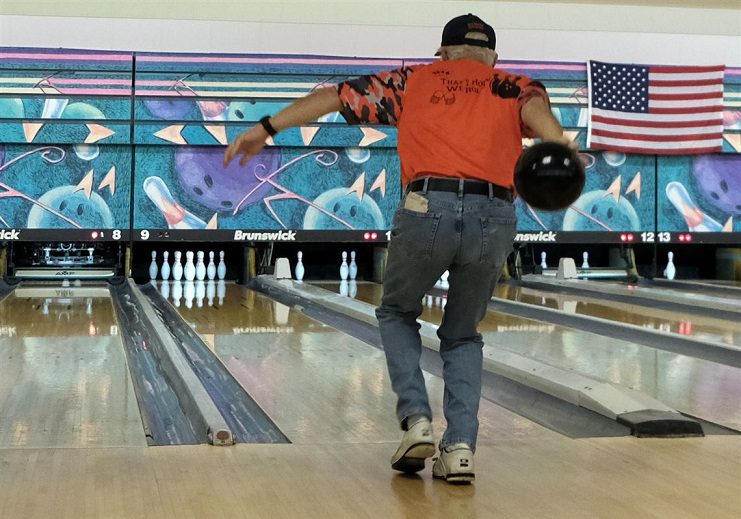Imagine you’re at the bowling alley, ready to have a fun-filled evening with friends.
You pick up your bowling ball, but something doesn’t feel right – it feels heavy! How do you know if it’s too heavy or just your imagination?
In this article, we’ll explore some telltale signs to help you determine if your bowling ball is too heavy.
So, next time you hit the lanes, you can focus on perfecting your technique rather than battling with an overly burdensome ball.
Review contents
Physical Signs of a Heavy Bowling Ball
Pain or Discomfort
One of the first signs that your bowling ball may be too heavy is experiencing pain or discomfort while bowling. You might feel strain in your fingers, hand, wrist, or arm as you attempt to hold and release the ball. This pain can range from mild discomfort to sharp, shooting pain. Paying attention to these physical signs is essential as they indicate that your ball places excessive stress on your body.
Difficulty in Holding or Gripping
Another indicator that your bowling ball may be too heavy is difficulty holding or gripping it properly. If you struggle to maintain a firm and comfortable grip on the ball, it may be too heavy for your strength and hand size. This can lead to inconsistencies in your release and ultimately affect your overall performance on the lanes.
Strain on the Wrist and Arm Muscles
A heavy bowling ball can also strain your wrist and arm muscles significantly. As you swing and release the ball, the excess weight can cause your muscles to overexert, leading to fatigue and potential injuries. If your wrist or arm feels strained or tired after bowling, it may indicate that your ball is too heavy for your current physical capabilities.
Inability to Swing or Release Smoothly
Lastly, if you cannot swing or release the ball smoothly, it may be a sign that it’s too heavy. A heavy ball can disrupt your swing’s natural flow and rhythm, making it difficult to execute your shots properly. If you find achieving a smooth and consistent release challenging, it’s worth considering whether your ball’s weight hinders your technique.
Impact on Bowling Technique
Inconsistent Bowling Speed
You may notice inconsistencies in your bowling speed when using a too-heavy bowling ball. The excess weight can slow down your arm swing, causing variations in your release velocity. This inconsistency can make adjusting to different lane conditions challenging and negatively impact accuracy and performance.
Lack of Control or Accuracy
Bowling with a ball that exceeds your physical capabilities can result in a lack of control and accuracy. Forcefully guiding a heavy ball can lead to erratic movements and imprecise targeting. As a result, you may struggle to consistently hit your desired spot on the lane, making it difficult to achieve the pin carry and strikes needed for higher scores.
Reduced Rev Rate
A heavy bowling ball can also reduce your rev rate, which refers to the revolutions the ball makes as it travels down the lane. With a heavier ball, it becomes more challenging to generate the necessary revolutions due to the increased effort required. This reduction in rev rate can affect your ball’s hook potential, making it harder to create the desired ball motion for optimal pin carry.
Changes in Style or Approach
Using a bowling ball that’s too heavy can force you to make significant adjustments to your bowling style or approach. You may find yourself altering your technique to compensate for the added weight, leading to inconsistencies and a departure from your natural game. These changes may disrupt the muscle memory and rhythm you’ve developed over time, potentially impacting your scoring and performance on the lanes.
Effect on Scoring and Performance
Decreased Power and Pin Carry
One of the most significant effects of bowling with a heavy ball is decreased power and pin carry. A heavier ball may not have enough energy to drive through the pins effectively, resulting in less pin action and reduced pin carry. This can lead to fewer strikes and spares, translating into lower scores and overall performance on the scorecard.
Inability to Generate Hook
Generating a hook is essential for many bowlers looking to increase their pin carry and create optimal bowling ball motion. However, using a too-heavy ball can make generating the necessary revs and rotation challenging to achieve the desired hook. You may struggle to consistently hit the pocket and maximize your scoring potential without generating a hook.
Increased Risk of Injury
Bowling with a ball that exceeds your physical capabilities increases your risk of injuries. The strain and stress placed on your muscles, tendons, and joints due to the excess weight can lead to various injuries, such as wrist sprains, muscle strains, or even more severe conditions like tendonitis or bursitis. It’s crucial to prioritize your health and avoid risking long-term damage by using a ball appropriate for your strength and skill level.
Fatigue and Exhaustion
A heavy bowling ball can contribute to fatigue and exhaustion, especially during extended sessions or tournaments. Excessive weight requires more energy expenditure, increasing muscular fatigue over time. This fatigue can adversely affect your consistency, endurance, and mental focus, making it harder to sustain peak performance throughout your bowling sessions.
Considering Your Physical Fitness
Evaluate Your Strength and Endurance
Before selecting a bowling ball, evaluating your current strength and endurance levels is essential. Different people have varying levels of physical fitness, and what might be comfortable for one person could be too heavy for another. It’s crucial to be honest about your abilities and choose a ball weight that allows for optimal control and performance without compromising your physical well-being.
Consult with a Bowling Coach or Instructor
Consider consulting with a bowling coach or instructor to better understand your physical capabilities and how they relate to your bowling game. They can assess your form and technique and provide valuable insight into the appropriate ball weight for your needs. Their expertise can help you avoid bowling-related injuries and maximize your overall performance.
Consider Your Overall Fitness Level
In addition to evaluating your strength and endurance, it’s crucial to consider your overall fitness level. Bowling is a physically demanding sport requiring a certain fitness level to perform optimally. Regular exercise, strength training, and flexibility exercises can significantly improve your physical capabilities on the lanes. Assessing and improving your fitness level can positively impact your ability to handle a heavier ball and enhance your bowling performance.
Take Into Account Any Pre-existing Conditions
If you have any pre-existing medical conditions or previous injuries, it’s essential to consider these when determining the appropriate ball weight for you. Certain conditions or injuries may require you to use a lighter ball to prevent exacerbating your existing issues. Consulting with a sports medicine specialist or physician can provide valuable guidance in determining the best course of action for your specific situation.
Properly Fitting a Bowling Ball
Getting Accurate Measurements
Getting accurate measurements of your hand and fingers is crucial to ensure a proper fit. This includes measuring your palm’s circumference and middle finger’s length to determine the correct ball size. A professional pro shop assistant can assist you in obtaining these measurements with precision to ensure a comfortable and secure fit.
Considering Your Hand Size and Shape
When choosing a bowling ball, it’s essential to consider not only the weight but also the size and shape of your hand. Ball manufacturers offer various ball layouts and hole configurations to accommodate different hand sizes and shapes. Working with a pro shop professional can help you determine the optimal layout and drilling pattern that matches your hand, promoting a proper and comfortable fit.
Consulting with a Professional Pro Shop
A professional pro shop is a valuable resource for fitting a bowling ball correctly. These experts have extensive knowledge of different ball models, weights, and drilling techniques to ensure the best fit for your needs. They can guide you through the selection process and recommend suitable options based on your physical attributes and bowling style.
Exploring Weight Options and Recommendations
Exploring various weight options and recommendations is essential when fitting a bowling ball. When selecting a ball weight, you should consider your strength, endurance, and overall physical capabilities. Pro shop professionals can provide insights into weight recommendations based on your skill level, physical fitness, and bowling goals. It’s crucial to find a balance between a challenging weight that promotes improvement and a weight that doesn’t strain your body.
Testing the Ball on the Lane
Start with a Comfortable Weight
When testing a new bowling ball, starting with a comfortable weight and within your physical capabilities is recommended. This allows you to focus on your technique, release, and overall feel of the ball without being hindered by excessive weight. Beginning with a manageable weight provides a baseline for evaluating your performance and adjusting accordingly.
Observe Your Approach and Release
As you bowl with the test ball, pay close attention to your approach and release. Note any changes in your technique, timing, or release motion compared to what you’re accustomed to. Assess whether the weight feels natural and allows you to execute your shots smoothly. If you experience any significant deviations or discomfort, it may indicate that the ball weight needs further adjustment.
Analyze Ball Speed and Rotation
During your testing, analyze the speed and rotation of the ball. Consider whether you can consistently achieve your desired ball speed and if the weight allows you to generate sufficient rotation. The goal is to find a weight that enables you to maintain control and accuracy while producing the desired ball motion for maximum pin carry.
Assess Ball Control and Accuracy
Lastly, evaluate your ball control and accuracy with the test ball. Pay attention to how well you can hit your target consistently and how accurately you can adjust to changing lane conditions. If you can hit your desired spot consistently and adjust effectively with the test ball, it suggests that the weight is suitable for your game. However, if you struggle to maintain control or accuracy, it may be necessary to explore different weight options.
Listening to Your Body
Pay Attention to Physical Discomfort
It’s crucial to pay attention to any physical discomfort or pain that arises while bowling. Your body provides valuable signals and feedback that can indicate whether the ball weight is suitable for you. If you experience any consistent or acute discomfort in your fingers, hand, wrist, or arm, it’s essential to reassess the weight and consider making adjustments to prevent potential injuries.
Notice Any Lingering Pain or Soreness
In addition to immediate discomfort, it’s essential to be mindful of any lingering pain or soreness after bowling. Suppose you consistently experience pain or soreness that persists beyond a reasonable recovery period. In that case, it may be a sign that the ball’s weight is too heavy for your body to handle. Ignoring these warning signs can lead to more severe injuries or long-term damage.
Be Mindful of Muscular Fatigue
Maintaining awareness of muscular fatigue during and after bowling sessions is crucial. While it’s normal for muscles to feel tired after physical activity, excessive or prolonged muscular fatigue can indicate that you’re using a ball weight that exceeds your physical capabilities. It’s vital to listen to your body and avoid overexertion to prevent injury and allow for proper recovery.
Trust Your Instincts and Feelings
Trusting your instincts and feelings is essential when determining your right ball weight. Each bowler is unique and has different physical abilities and preferences. If something doesn’t feel correct or comfortable with the ball weight you’re using, it’s essential to explore alternative options that align better with your physical capabilities and comfort level.
Seeking Professional Guidance
Consult with a Bowling Coach
Consider consulting with a bowling coach if you’re unsure about the ball weight for your bowling game. A coach can provide expert advice and guidance based on their experience and knowledge of the sport. They can assess your technique, physical capabilities, and desired outcome to help determine the optimal ball weight that promotes growth and performance.
Visit a Sports Medicine Specialist
For bowlers with pre-existing medical conditions, chronic pain, or a history of injuries, seeking input from a sports medicine specialist is highly recommended. These professionals deeply understand the human body’s mechanics and can assess your unique situation. They can provide specialized guidance on choosing a bowling ball weight that minimizes the risk of exacerbating your existing conditions or injuries.
Receive Input from Experienced Bowlers
Experienced bowlers can offer valuable insights and perspectives based on their own experiences. Engaging in conversations with fellow bowlers, especially those who have faced similar challenges or have overcome them, can provide you with different strategies and considerations when selecting the right ball weight. Their experiences and advice can help you make informed decisions about finding the optimal weight for your bowling game.
Join a Bowling Club or League
Joining a bowling club or league is an excellent way to connect with other bowlers and receive guidance from experienced individuals. These communities foster a supportive environment where members share their knowledge and experiences. Engaging with these groups can help you gain valuable insights into ball weight selection and receive feedback from bowlers who have encountered similar situations or obstacles.
Exploring Incremental Weight Changes
Gradually Increase or Decrease Ball Weight
If you’re unsure about the ideal ball weight for your game, consider exploring incremental weight changes. Rather than significantly jump in weight, gradually increase or decrease the ball weight by a pound or half a pound. This allows you to gauge the impact on your performance and how your body responds to the change. Incremental adjustments provide a more controlled and manageable process for finding the optimal ball weight.
Monitor the Effects on Performance
When making incremental adjustments to the ball weight, monitoring the effects on your performance is essential. Pay attention to changes in your consistency, accuracy, ball control, and overall scoring. Ideally, you want to find a weight that consistently achieves the desired ball motion and scoring potential while maintaining control and avoiding strain or injury.
Make Adjustments Based on Results
Make adjustments as necessary based on the results of your incremental weight changes. If a slightly heavier or lighter ball improves your performance and overall comfort, continue in that direction. However, if the change negatively impacts your performance or causes discomfort, consider alternative weight options to find the best fit for your bowling game.
Repeat the Process as Necessary
Finding the perfect ball weight for your bowling game may require repeating the incremental weight change process multiple times. It’s crucial to remain patient and persistent as you make these adjustments. Each change provides an opportunity to learn more about your capabilities and preferences, gradually guiding you toward the weight that enhances your performance and overall enjoyment of the sport.
Staying in Tune with Your Game
Regularly Assess Your Bowling Performance
To ensure you’re optimizing your bowling performance, make it a habit to assess your game regularly. Pay attention to your consistency, accuracy, and scoring trends. By regularly evaluating your performance, you can identify potential areas for improvement and determine if any adjustments to your ball weight or technique are necessary.
Stay in Communication with Your Body
Listen to your body and stay in tune with how it feels during and after bowling sessions. If you notice any persistent discomfort or pain, take it as a sign that you may need to reevaluate your ball weight. Proper warm-up, cool-down routines, and stretching exercises can help maintain your health and prevent potential injuries.
Evaluate Feedback from Others
Feedback from others, whether it be fellow bowlers, coaches, or instructors, can provide valuable insight into your game. Be open to receiving feedback and constructive criticism to assist you in identifying areas for improvement. This input can help you determine if your ball weight is appropriate for your physical capabilities and enable you to make the necessary adjustments to enhance your performance.
Continuously Seek Improvement
Bowling is a sport that requires constant improvement and growth. Maintain a continuous learning mindset and seek various opportunities to enhance your skills. Attend clinics, workshops, or training sessions to gain more knowledge and refine your technique. By continuously seeking improvement, you can discover new insights that may shape your decisions regarding ball weight and improve your overall bowling experience.
In conclusion, determining whether your bowling ball is too heavy requires careful observation and consideration of various physical signs and their impact on your performance. You can identify if your current ball weight suits you by paying attention to pain or discomfort, difficulties in holding or gripping, the strain on your wrist and arm muscles, and any challenges in swinging or releasing smoothly.
Understanding the impact on your bowling technique and performance, including inconsistent bowling speed, lack of control or accuracy, reduced rev rate, and changes in style or approach, further highlights the importance of selecting the right ball weight.
By considering your physical fitness, properly fitting a bowling ball, testing it on the lane, listening to your body, seeking professional guidance, exploring incremental weight changes, and staying in tune with your game, you can optimize your performance, prevent injuries, and continuously improve as a bowler.









![Spare bowling ball Top 10 in 2024. (reviews) Top 10 Best Spare Bowling Balls [2021 Reviewed]](http://landofbowling.com/wp-content/uploads/2021/07/Top-10-Best-Spare-Bowling-Balls-2021-Reviewed.jpg)






